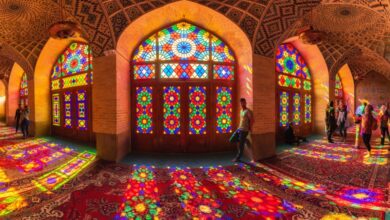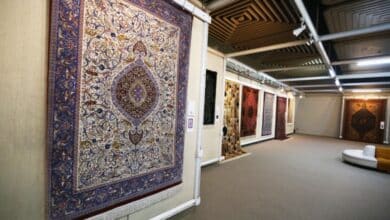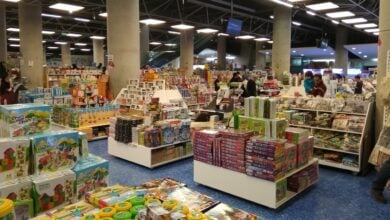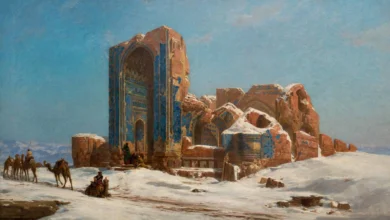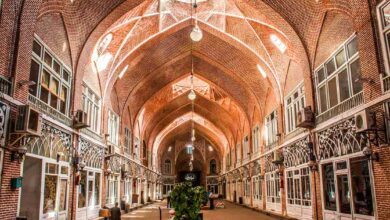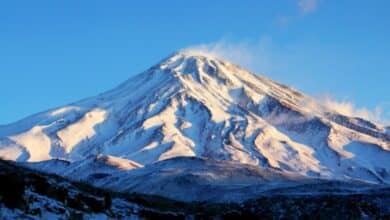Kerman Grand Bazaar: All You Need To Know
Explore Authentic Crafts, Delicious Local Treats, and Rich History

The Kerman Grand Bazaar serves as both a commercial hub and a site of historical significance. Established approximately 600 years ago, it plays a vital role in the economic activities of the local community. Visitors to this historic market can find a variety of exquisite items, including vibrant carpets, Afshari rugs, Kermani shawls, antique rugs, khurjins, and copperware. The remarkable architecture of the Kerman market is a striking feature that captivates all who pass by.
Contents
Knowing the Kerman Grand Bazaar
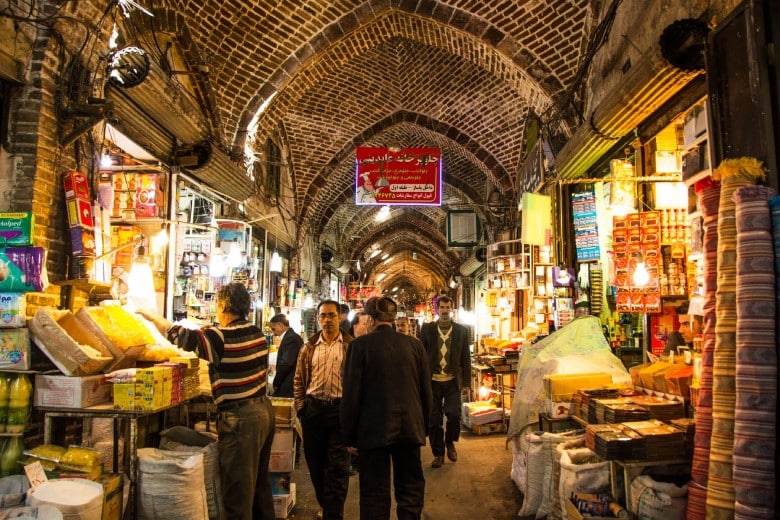
This remarkable market is situated in the Citadel Square of Kerman city, accessible via various routes. The stunning architecture of Kerman’s historical market is hard to overlook. Within the market’s architectural design, one can observe both small and large arches, a sense of symmetry, earthy tones, a consistent rhythm, and blue tiles adorning different areas. Outside the bazaar, there is little of note, apart from a wind turbine, a mosque, or a caravanserai.
The minarets and windbreaks of the bazaar contribute to a distinctive image of harmony, shaped by its location in a desert city. The design of the bazaar is such that it fosters a cool and pleasant environment. Thanks to the wind deflectors, elevated ceilings, and straw construction, visitors can experience a refreshing breeze even during the hottest months of the year.
Moreover, within the charming Kerman Grand Bazaar, one can discover exceptional oil paintings and plaster casts that reflect the rich heritage of the past.
Kerman Grand Bazaar Architecture
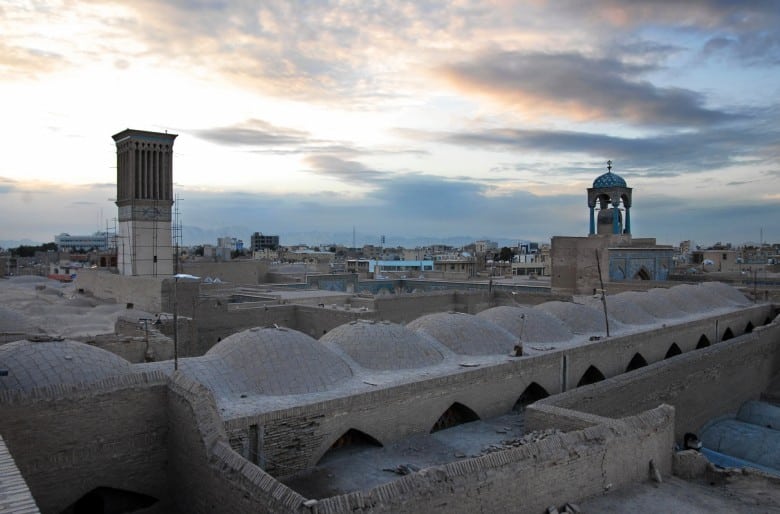
The primary attribute of Kerman Grand Bazaar architecture is its inherent simplicity. This architectural style is characterized by the repetition of arches in various sizes, a consistent rhythm, symmetry, and a predominant earthy color, occasionally enhanced by blue tiles in certain areas. Overall, there is little emphasis on the exterior, aside from features like wind turbines or the facades of mosques and caravanserais, which possess a symbolic significance.
The bazaar features a notably high ceiling, facilitating a comfortable airflow throughout the space. Additionally, the vents within the vaults contribute to both air circulation and illumination. Certain structures incorporate wind deflectors to enhance air conditioning. Remnants of oil paintings can still be observed in sections of the market’s ceiling. The historical market of Kerman, while enclosed, is designed to maximize shade and minimize solar heat absorption. The straw layer on the exterior of the bazaar serves as insulation, reflecting radiant heat.
Before the current structure enveloping the bazaar was established, the series of domes that comprised the bazaar prominently defined the city’s skyline. The marketplace existed in a symbiotic relationship with the desert, with only minarets and windmills visible on the horizon.
Kerman Grand Bazaar Different Parts
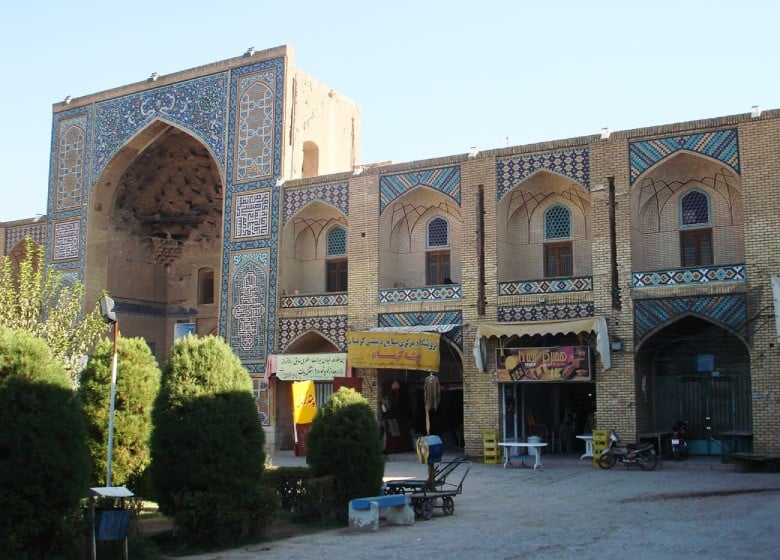
Kerman Grand Bazaar is composed of various sections, including Ganjali Khan Bazaar, Ekhtiyari Bazaar, Qeysarieh Bazaar (Jewellery), Coppersmith Bazaar (Mesgarha), Cobblers Bazaar, Hat Market, Blacksmith Bazaar, Aziz Bazaar, Attaran Bazaar, Mozaffari Bazaar, Ghadmagah Bazaar, Qale Mahmoud Bazaar, and others. The structure of the bazaar is integrated with a castle. Additionally, within the Kerman market, there are four markets that link this main market to several sub-markets, such as Chaharsouq Ganj Ali Khan.
Nagharehkhaneh Bazaar
At the initial point from Arg Square, one encounters the Naqarakhane market, characterized by its expansive and elongated ceiling, as well as a headland adorned with tiles. This area features multiple rooms situated above. The architectural style of this section appears to date back to the late Qajar period.
Qeysari Bazaar
This market serves as a prominent hub for the buying and selling of gold in Iran, attracting a significant number of buyers, sellers, and tourists on a regular basis. Within this traditional marketplace, there are 47 goldsmith shops in operation.
BOOK ONLINE
Kerman Hotels
Ganjali Khan Bazaar
The Ganjali Khan complex is regarded as one of Iran’s architectural masterpieces and marks a significant development in the Kerman market. This entire ensemble is dedicated to Imam Reza (a.s.) and is managed by Astan Quds Razavi.
Ekhtiyari Bazaar
The fourth section of the Kerman Bazaar commences at the conclusion of the southern Ganjali Khan market and stretches to the initial Vakil market in Kerman. This segment is classified as an optional market. This narrow bazaar is regarded as the most ancient part of the marketplace, holding significance due to its strategic position between the Ganjali Khan and Vakil bazaars. It is bordered to the west by the Ganjali Khan market and to the east by the Vakil market.
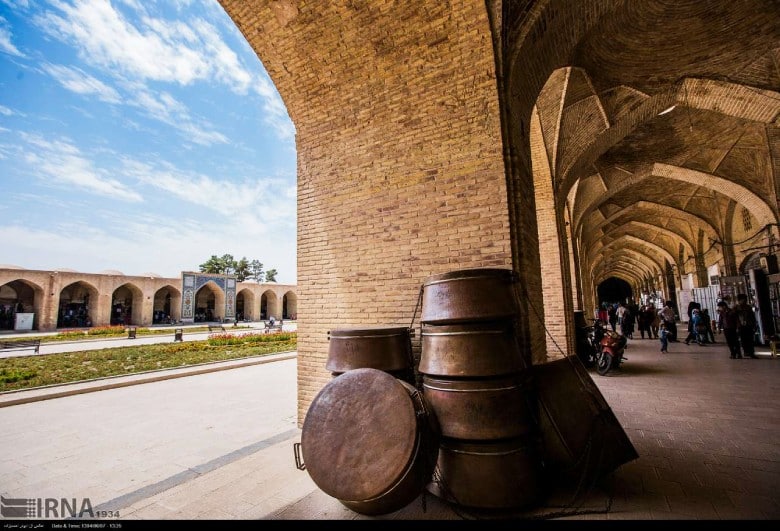
Indian Caravanserai
In the latter part of the 19th century, the British acquired a lease for the Hindu caravanserai from Imam Juma and subsequently transferred it to the Hindu community. As the Hindus established their residence and conducted trade in this location, it became recognized as the Hindu caravanserai. This site features a Hindu temple designed in a distinctive Hindu architectural style.
Aziz Bazaar
Aziz Bazaar constitutes a segment of the north-south line of Kerman Bazaar, commencing at Sharia’ti Street, adjacent to Haj Agha Ali Bazaar, and concluding at the Tower of Prince Shahrukh Khan. Originally, approximately 70 shops were situated along this market route; however, the development of the North and South streets necessitated the relocation of the majority of these shops to the adjacent thoroughfare.
The rest bazaars are:
- Mozafari bazaar
- Hajaghaali complex
- Arg bazaar
- Sardar bazaar
- Qale Mahmoud bazaar
- Mesgari bazaar

The Location and Working Hours of Kerman Grand Bazaar
Kerman Grand Bazaar is located in Arg square, Kerman city. You can reach the bazaar every day from 9:00 am to 21:30 pm. Getting to Kerman grand bazaar is easy, public vehicles such as bus and taxi are available for visitors.
Book Iran Flights
Buy Iran flight tickets at the lowest price
Explore Iran’s culture and history with affordable and reliable flight tickets.
Final Words
The Kerman Grand Bazaar stands as one of the most distinguished and historic marketplaces in Iran. Extending approximately 1,200 meters from Arg Square to Shohada Square, it holds the title of the longest bazaar in the country. With a history spanning over 600 years, this bazaar has served as a vital economic center, strategically positioned along the ancient Silk Road.
The bazaar comprises a diverse array of sections, each constructed during various historical epochs, showcasing the architectural styles prevalent in those periods. Among its notable areas are the Ganj Ali Khan Bazaar, which includes a bathhouse, mosque, and mint, and the Arg Bazaar, recognized for its lofty ceilings and elaborate tile work.
As one strolls through the Kerman Grand Bazaar, an assortment of traditional products can be discovered, ranging from Persian carpets and copperware to spices and confections. It is a lively venue where the realms of history and commerce intertwine harmoniously.
Kerman Grand Bazaar FAQ
Is Kerman bazaar the longest bazaar in Iran?
This bazaar starts from Arg square to Shohada square, and is the longest straight bazaar in Iran.
Does Kerman bazaar host visitors on holidays?
No, on Fridays and official holidays Kerman bazaar is closed.
What are some parts of Kerman grand bazaar?
Hajaliaqha bazaar, Arg bazaar, Sardar bazaar and Meydan Qale are only several bazaars in Kerman grand bazaar.
